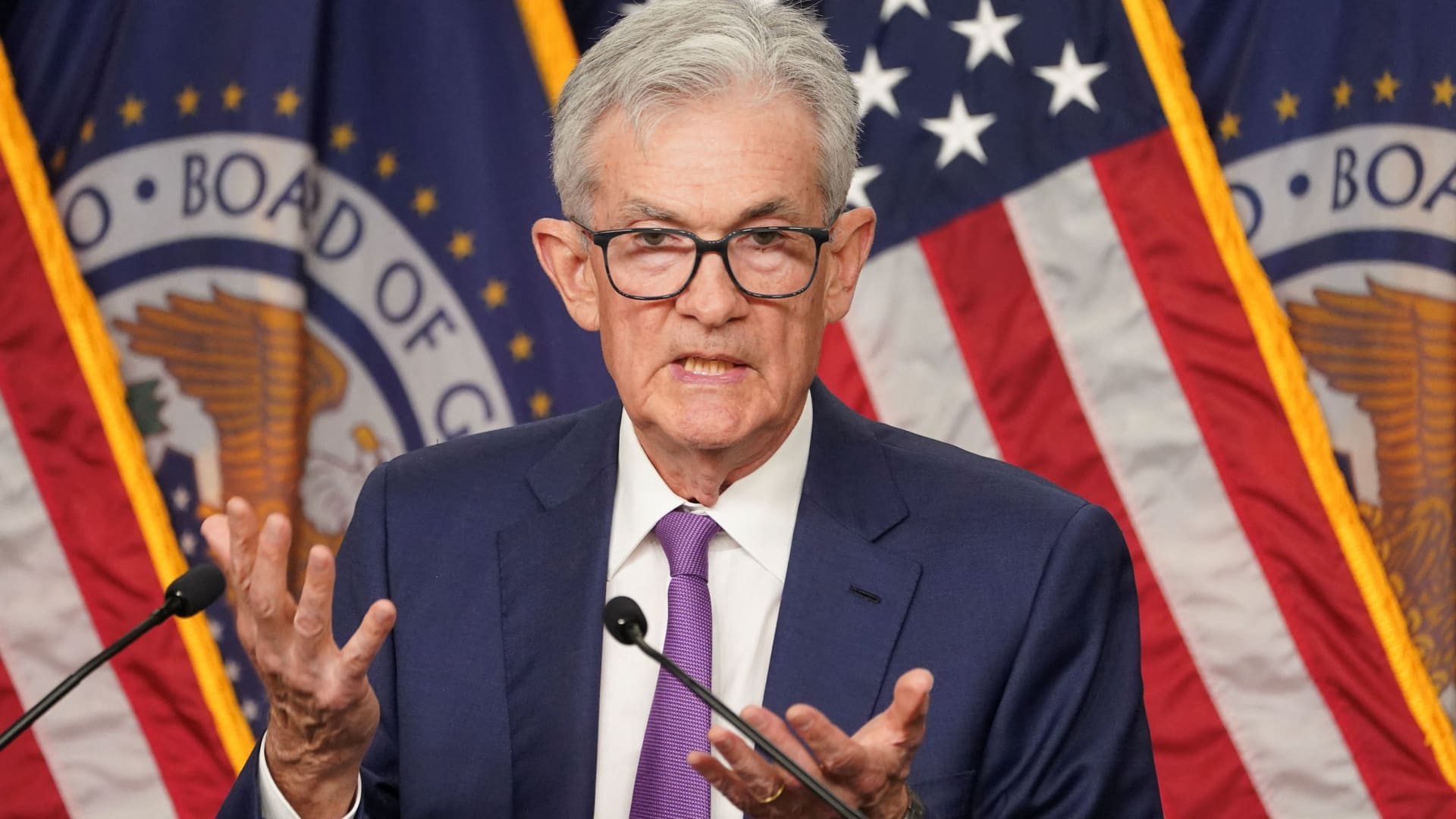Federal Reserve Holds Interest Rates Steady: Implications For The Economy And Markets
The Federal Reserve's decision to maintain interest rates at current levels has created ripples throughout the global financial market, capturing the attention of investors and economists. This careful strategy underscores the central bank's approach to managing economic uncertainty amidst evolving challenges. As the Fed continues to assess inflation and employment trends, the focus remains on two anticipated rate cuts later in the year.
In this article, we will explore the ramifications of the Federal Reserve's decision and analyze its potential effects on the economy, financial markets, and businesses. Grasping the rationale behind the Fed's actions is crucial for anyone navigating the intricacies of modern finance.
By examining the historical context of interest rate policies and dissecting the latest economic data, this guide aims to equip readers with a comprehensive understanding of the Fed's monetary strategy and its broader implications for the U.S. and global economies.
Read also:March Madness 2025 A Comprehensive Guide To The Ncaa Mens Basketball Tournament
Table of Contents
- Introduction
- The Federal Reserve's Decision to Maintain Interest Rates
- The Economic Context Behind the Decision
- Impact on Financial Markets
- Inflation Dynamics and the Federal Reserve's Role
- Employment Trends and Monetary Policy
- Future Projections: Two Rate Cuts This Year
- Global Implications of the Fed's Actions
- Historical Insights into Federal Reserve Interest Rate Decisions
- Conclusion and Next Steps
The Federal Reserve's Decision to Maintain Interest Rates
The Federal Reserve's choice to keep interest rates unchanged reflects its dedication to balancing growth and stability. By preserving the current rate, the Fed seeks to ensure that economic recovery continues while addressing concerns about inflation and market fluctuations.
Key Factors Influencing the Decision
Several critical factors contributed to the Fed's decision:
- Slowing global economic expansion
- Persistent inflationary pressures
- Uncertainty due to geopolitical tensions
Though the decision to maintain rates may appear cautious, it aligns with the Fed's broader strategy of gradually adjusting monetary policy to adapt to shifting economic conditions.
The Economic Context Behind the Decision
The U.S. economy has experienced moderate growth over recent years. However, recent indicators suggest that this growth may be slowing. Inflation remains a significant concern, as prices continue to rise faster than anticipated. Additionally, employment levels have shown signs of stagnation, prompting the Fed to reconsider its monetary policy approach.
Challenges Facing the Economy
Among the primary challenges confronting the economy are:
- Rising interest rates in other nations
- Trade tensions impacting global supply chains
- Consumer confidence and spending trends
These challenges emphasize the importance of the Fed's decision to maintain interest rates, providing stability during a period of economic uncertainty.
Read also:2025 Mens March Madness Projections A Comprehensive Guide To The Ncaa Tournament
Impact on Financial Markets
The Federal Reserve's decision to keep interest rates steady has significantly influenced financial markets. Investors have responded positively, with stock markets rallying following the announcement. However, bond markets have shown mixed reactions, reflecting concerns about the long-term implications of the Fed's monetary policy.
Stock Market Reaction
Stock prices have increased following the Fed's decision, as investors interpret the move as a sign of continued economic support. Companies with substantial debt levels, in particular, have benefited from the decision, as lower interest rates reduce borrowing costs.
Inflation Dynamics and the Federal Reserve's Role
Inflation remains a central factor in the Federal Reserve's decision-making process. The central bank aims to maintain an inflation rate of approximately 2%, a target that has been challenging to achieve in recent years. By keeping interest rates steady, the Fed hopes to strike a balance between stimulating economic growth and controlling inflation.
Tools Used to Combat Inflation
The Federal Reserve employs various tools to manage inflation, including:
- Adjusting interest rates
- Engaging in quantitative easing or tightening
- Providing forward guidance to markets
These tools allow the Fed to influence economic conditions and guide the economy toward its desired outcomes.
Employment Trends and Monetary Policy
Employment levels serve as a key indicator of economic health, and the Federal Reserve closely monitors job market trends when making monetary policy decisions. While unemployment rates remain low, concerns about wage growth and labor market participation have led the Fed to adopt a more cautious stance.
Challenges in the Job Market
Some of the challenges facing the job market include:
- Skills gaps and mismatches in the labor force
- Automation's impact on certain industries
- Demographic shifts affecting the workforce
Addressing these challenges requires a comprehensive approach that integrates both monetary and fiscal policies.
Future Projections: Two Rate Cuts This Year
Despite its decision to maintain interest rates, the Federal Reserve has indicated its intention to implement two rate cuts later this year. This projection is based on the central bank's assessment of current economic conditions and its outlook for the future. While the timing and magnitude of these cuts remain uncertain, they are expected to provide additional support to the economy.
Reasons for the Rate Cuts
The Federal Reserve's decision to pursue rate cuts is driven by several factors:
- Persistent inflationary pressures
- Global economic uncertainties
- Market expectations and investor sentiment
These cuts are designed to stimulate economic activity and ensure that recovery remains on track.
Global Implications of the Fed's Actions
The Federal Reserve's decisions have far-reaching consequences for the global economy. As the world's largest economy, the U.S. plays a pivotal role in shaping international financial markets. The decision to maintain interest rates and plan for future cuts has sparked discussions among central banks worldwide, many of which are also addressing similar economic challenges.
Impact on Global Markets
The global impact of the Federal Reserve's actions includes:
- Increased capital flows to emerging markets
- Strengthening of certain currencies relative to the dollar
- Improved access to credit for businesses and consumers worldwide
These effects highlight the interconnected nature of global financial systems and the importance of coordinated policy responses.
Historical Insights into Federal Reserve Interest Rate Decisions
To fully appreciate the significance of the Federal Reserve's current decision, it is essential to examine its historical context. Over the past few decades, the Federal Reserve has implemented a range of interest rate policies in response to changing economic conditions. These policies have achieved varying degrees of success, offering valuable lessons for today's policymakers.
Key Lessons from History
Some of the key lessons learned from historical interest rate decisions include:
- The importance of flexibility in monetary policy
- The need for clear communication with markets
- The role of data-driven decision-making
By applying these lessons, the Federal Reserve can better navigate the complexities of modern economic challenges.
Conclusion and Next Steps
In conclusion, the Federal Reserve's decision to maintain interest rates reflects its commitment to promoting economic stability and growth. While the decision may appear cautious, it is grounded in a thorough analysis of current economic conditions and future projections. By signaling its intention to implement two rate cuts later this year, the Federal Reserve aims to provide additional support to the economy and address ongoing concerns about inflation and employment.
We encourage readers to engage with this content by leaving comments, sharing the article, or exploring related topics on our website. Understanding the Federal Reserve's monetary policy decisions is vital for anyone seeking to navigate the complexities of modern finance. Stay informed and continue to follow developments in the world of economics and finance.


